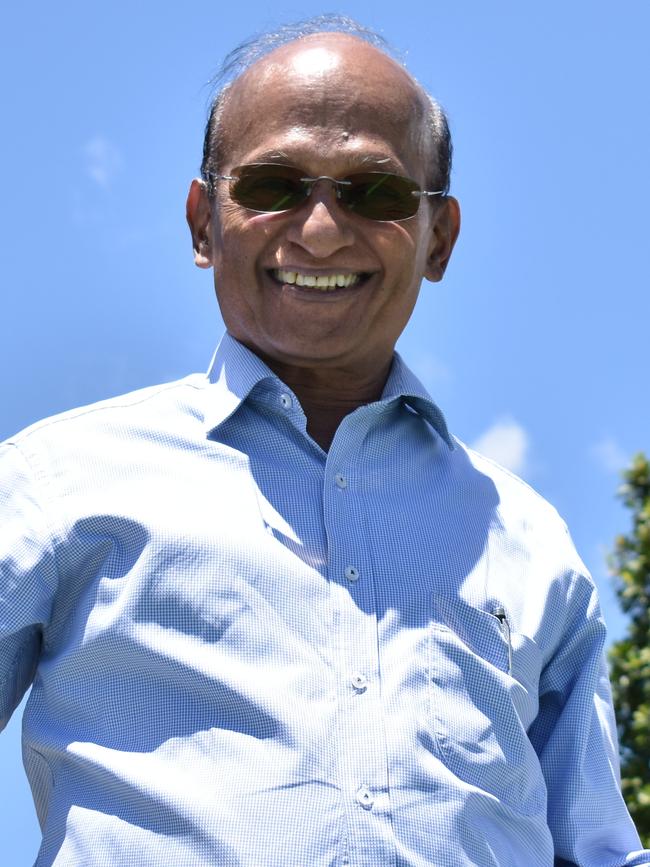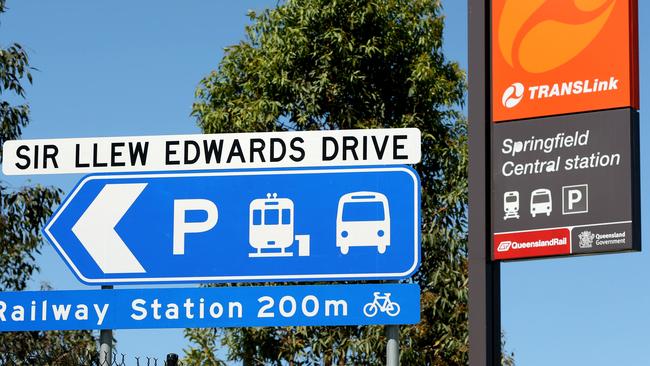Maha Sinnathamby unveils vision to make Springfield the planet’s most eco-friendly community and an economic epicentre
He is the billionaire dreamer behind a master planned super city, which will grow to a population of 115,000 by 2036. But he is far from done, with plans to “turbocharge” his dream.
QLD News
Don't miss out on the headlines from QLD News. Followed categories will be added to My News.
Is there no stopping Maha Sinnathamby, the boyish 81-year-old who created Australia’s largest master planned city since Federation?
The billionaire dreamer who grew up in poverty has appointed investment bank Moelis Australia to find a partner or consortium to “turbocharge” his beloved Springfield, 30 minutes southwest of Brisbane.
Springfield is on a roll. The population will treble to 115,000 by 2036. Houses in the dress circle golf links precinct have cracked the $1 million. A new hospital and another school have been given the green light and the town has become a magnet for science and technology start-ups
Just don’t ask Sinnathamby if he is stepping down as chairman of Springfield City.
“No, this isn’t sign I’m heading to the retirement lounge just yet,” he said.
“Age is no barrier. I’m enjoying what I’m doing, and I would like to think I can help the new partner on this journey.’’

Sinnathamby is restless and cranky the coronavirus pandemic delayed his mission to mould Springfield as a “future city” built on the pillars of health, education, and technology. Sinnathamby’s plan outlines a CBD larger than Brisbane’s.
He and his deputy chairman, Bob Sharpless, built Springfield from scratch after buying the 2860-hectare site for $8m in 1992. Springfield is the first and only master planned city in Australia since Canberra. Springfield corporation is now valued at $88 billion.
Sinnathamby grew up in Malaysian village of Rantau on a rubber plantation with no electricity and where his family drew their water from a well.
Now he talks about projects worth hundreds of millions as he pieces together the town-planning jigsaw he calls Springfield’s “knowledge precinct”.
He already has approvals for 1.22m sq m of commercial space and 5340 apartments on 119ha of land. Super funds, sovereign wealth funds, overseas pension funds and developers are already sniffing around.
Despite its success Springfield is in its infancy. Once complete, Springfield expects to eclipse cities like Toowoomba and Cairns.
“It is only 25 per cent developed,” Sinnathamby concedes.
“With more than $18bn so far, Springfield already is home to 11 schools, a university, residential developments and a hospital.”
Securing highway and rail links was vital in pinning it together.
“We are well on our way to becoming an economic epicentre for southeast Queensland.”
The privately developed city has a potential “end value” of $88bn, he said. He sees it as a nation-building project that can create 30,000 jobs.
“It’s like being a partner in building the Opera House,’’ he gushed.
“I believe this project is that significant. This is just not a dream.”
On current growth rates Springfield’s population of 46,000 will triple in the next two decades, he said.

His next plan is ambitious.
“Greater Springfield will be the world’s most eco-friendly community by 2038,” he said.
“We have one chance – and the responsibility to our residents both now and into the future.
“The focus on efficient and sustainable energy production, storage, and integration with the community - has never been more important for Australia, and for Springfield City.
“Our goal is to have no homes or businesses powered by fossil fuels by 2038, with hydrogen-powered buses providing transport options, and solar panels installed on every suitable rooftop.”
In September, a cutting-edge hydrogen fuel-cell manufacturing plant will open its doors at Greater Springfield. Sinnathamby said land had been set aside in Springfield’s 40ha Vicinity business park for the LAVO plant.
The firm designs and manufactures renewable hydrogen energy batteries. Technology writers recently listed it as an Australian invention that could change the world.
“LAVO has the first and only commercial-ready hydrogen energy storage system in the world designed for everyday use by residential homes and businesses,’’ Sinnathamby said.
It uses metal hydride technology to store hydrogen equivalent to up to 40kWh electricity – enough to power an average household for more than two days without the reliance of the grid.
Sinnathamby’s does not want the folk of Springfield to ever be ever left in the dark.
(breakout with lead if useful)
SPRINGFIELD BY NUMBERS
• Masterplan approved for 2.685m sq m of mixed-use gross floor space and 22,855 apartments
• $18bn spent on Greater Springfield to date
• Population of 46,000, growing at 5.8% per annum. .
• 2 rail stations and connected by major road networks
• 11 schools, public and private
• Private hospital, university, and TAFE campus
• Major shopping centre, Orion Springfield Central
• Data centre and dark fibre network connecting Greater Springfield and Brisbane




